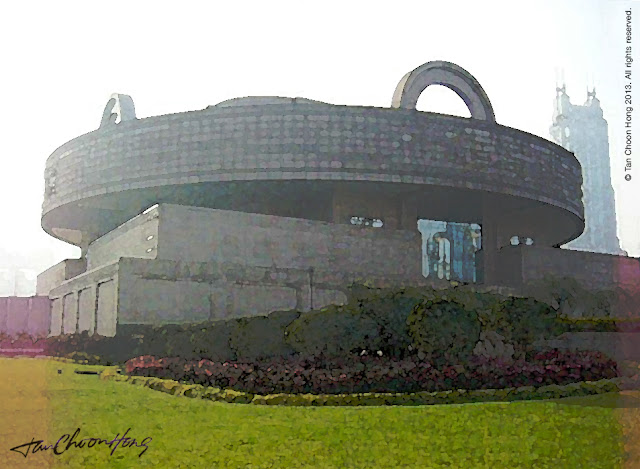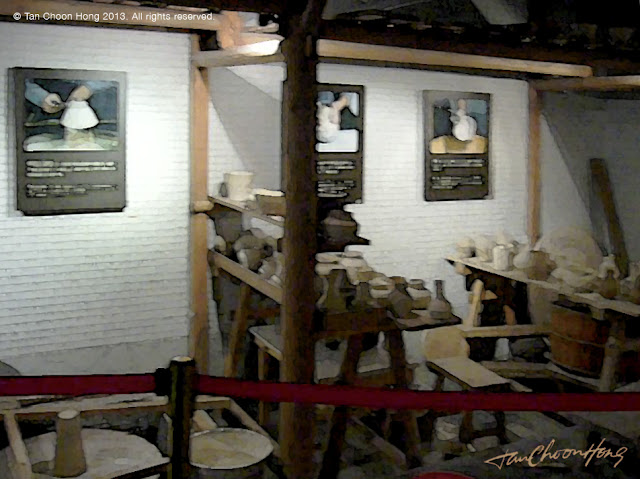Shanghai Museum
Its architectural form inspired by a bronze age sacrificial vessel, the Shanghai Museum sits imposingly in downtown People’s Square district. Housed inside the galleries are some of China’s most precious treasures including ancient bronze pieces, ceramics, paintings and calligraphy, jade and coins, Ming and Ching furniture, Buddhist sculptures, and art of the minority nationalities. There is also a gallery devoted to the quintessential Chinese invention – paper money.
The Shanghai Museum is no place to hurry through, especially if you are a connoisseur of fine objets d’art. Be prepared to spend several fruitful hours just going through the permanent collection spread over 38,000 sq m of floor space, and more if there are themed exhibits put up in its three exhibition halls.
 |
The Shanghai Museum building with its upper half unmistakably inspired by a Shang dynasty bronze ritual vessel.
|
 |
A masterpiece from the ceramics gallery with its vast collection covering simple Neolithic clay pieces to the stunning masterworks of the Ming and Ching dynasties.
|
 |
A beautifully proportioned blue and white moon flask with looped handles and decorated with floral motif, from the ceramics gallery.
|
 |
A pottery station complete with potter’s wheel and finished products ready for painting and firing.
|
 |
A full scale model of a dragon kiln, so called for its fiery vents.
|
 |
A cut-away section of the model kiln with finished products awaiting collection.
|
 |
Plates of one meter across are all in a day’s work.
|
 |
Such a beautiful porcelain pillow must have induced sweet dreams for some ancient head.
|
 |
Exuding sheer horsepower, this Tang dynasty glazed pottery creation is a fitting tribute to the Chinese love affair with the horse.
|
 |
Masterly executed paintings and calligraphy spanning the dynasties and styles are among the treasures on display.
|
 |
"Biang zhong," a percussion instrument of bronze bells used in ritual and court music.
|
 |
Bronze “water spouting bowl,” when half-filled with water and rubbed on the handles, produces water spouts and musical tones.
|
 |
Delicately wrought gold "kirin" and exquisitely carved jade dragon ornaments.
|
 |
Boats, totems, headgear, hand-woven textiles and other artefacts of the ethnic tribes are displayed in the minority nationalities gallery.
|
 |
Ancient coins and vintage bank notes trace the development of currency through the ages.
|


Comments
Post a Comment